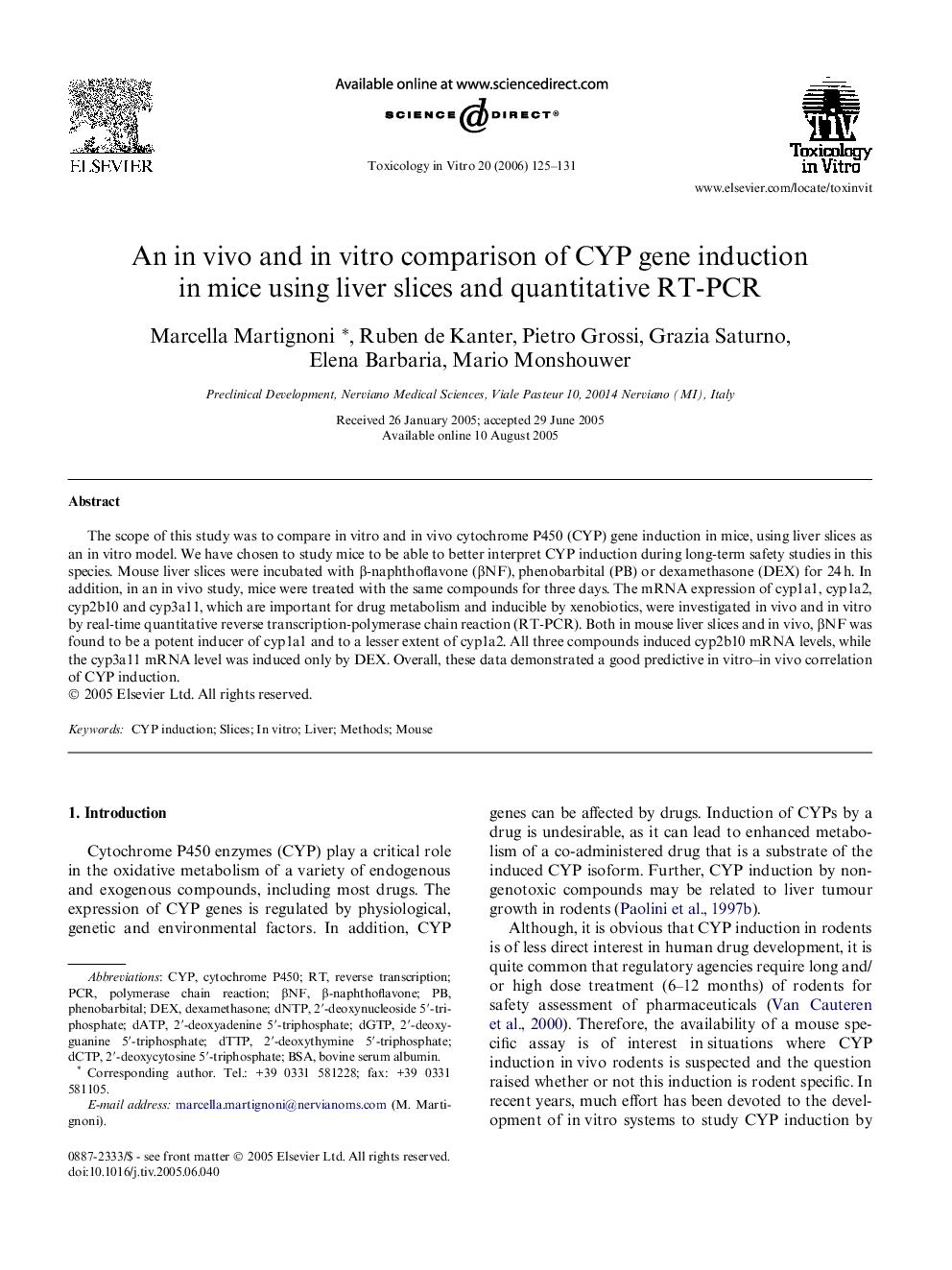| Article ID | Journal | Published Year | Pages | File Type |
|---|---|---|---|---|
| 2603687 | Toxicology in Vitro | 2006 | 7 Pages |
The scope of this study was to compare in vitro and in vivo cytochrome P450 (CYP) gene induction in mice, using liver slices as an in vitro model. We have chosen to study mice to be able to better interpret CYP induction during long-term safety studies in this species. Mouse liver slices were incubated with β-naphthoflavone (βNF), phenobarbital (PB) or dexamethasone (DEX) for 24 h. In addition, in an in vivo study, mice were treated with the same compounds for three days. The mRNA expression of cyp1a1, cyp1a2, cyp2b10 and cyp3a11, which are important for drug metabolism and inducible by xenobiotics, were investigated in vivo and in vitro by real-time quantitative reverse transcription-polymerase chain reaction (RT-PCR). Both in mouse liver slices and in vivo, βNF was found to be a potent inducer of cyp1a1 and to a lesser extent of cyp1a2. All three compounds induced cyp2b10 mRNA levels, while the cyp3a11 mRNA level was induced only by DEX. Overall, these data demonstrated a good predictive in vitro–in vivo correlation of CYP induction.
